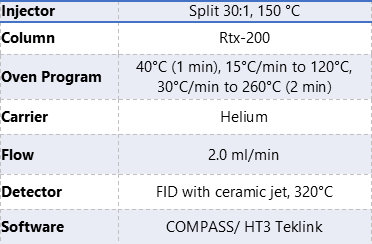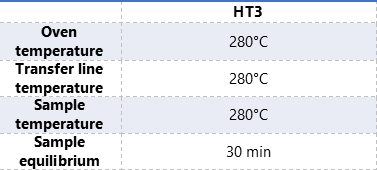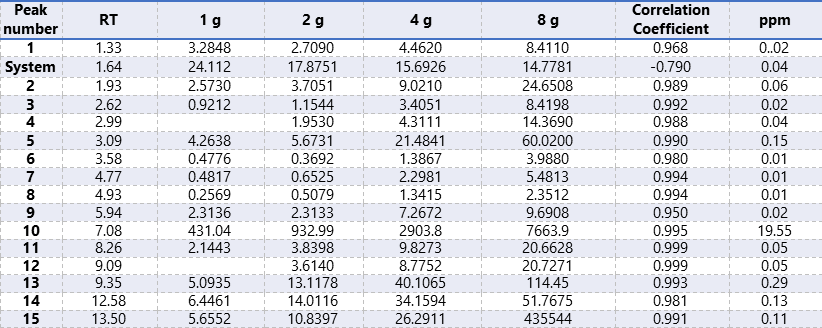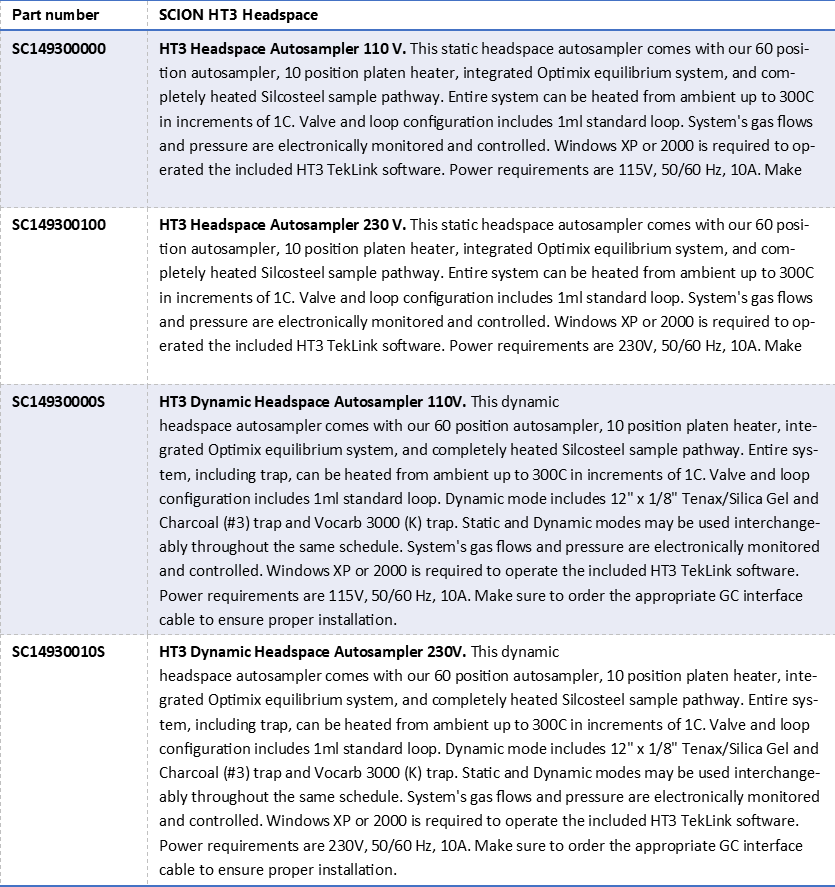High Temperature Headspace Assay of Polymers with SCION Instruments HT3 Static Headspace Instrument
INTRODUCTION
Since the early 1990’s air quality in enclosed spaces such as office buildings, homes and automobiles has become a major environmental concern. The concern is that man made materials used in these environments release volatile (VOC) and semi-volatile organic compound (SVOC) reducing air quality in these environments.
Manufactures of materials used in these environments have quickly responded to reduce or remove VOC’s and SVOC’s from their processes to reduce or eliminate these compounds concentration in enclosed areas, thus improving the quality of the indoor air.
The VOC’s and SVOC’s from high temperature (HT) polymers is typically determined with thermal desorption methods instead of headspace. These HT polymers have glass transition and melt temperatures well above 200°C, which is typically the upper limit of most commercially available headspace instruments.
The SCION Instruments HT3 headspace instrument however has an upper sample heating temperature of 300°C.
 Figure 1. SCION HT3 Headspace Sampler together with the SCION Instruments 8300 GC platform
Figure 1. SCION HT3 Headspace Sampler together with the SCION Instruments 8300 GC platform
Thermal desorption instruments limit the sample size to the internal diameter of the thermal desorption tube, 4 mm. Large solid samples must be reduced in size by mechanical methods, which can heat the sample releasing VOC’s and SVOC’s prior to the analysis. This could create a false negative result.
A sample assayed with a headspace instrument can be up to 11 mm wide, the size of the vial opening and 60 mm long, the depth of the vial, thus allowing minimal to no mechanical resizing of the sample.
This paper documents the assay of a HT polymer with SCION Instruments HT3 Static headspace instrument at 280°C. This temperature is above the glass transition temperature of the HT polymer at about 200°C and is below its melt temperature of 300°C. The HT polymer was tested to compare the VOC’s and SVOC’s released during headspace analysis to the current thermal desorption method.
Table 1. Instrumentation operating conditions. 

SAMPLE PREPARATION
A HT polymer was obtained as raw pellets. Four sample weights, 1 g, 2g, 4g, and 8g, were weighed into 22 mL headspace vials. These were capped and sealed with Teflon lined septa. The sample weight range will provide data to determine the linearity of the VOC and SVOC peaks observed in the sample.
A standard was prepared by dissolving 100 mg of one of the expected VOC’s in 5 mL of methanol and placing 50 µL into a 22 mL headspace vial. The vial was immediately capped and sealed with a Teflon lined septa. The samples and standard were assayed with the SCION Instruments HT3.
RESULTS
Low level VOC’s and SVOC’s were readily detectable with this static headspace method. Fifteen compounds were detected and their peak area used to calculate their linearity versus the HT polymer sample weight. Figure 2 is the overlay of the chromatograms for the four HT polymer sample weights.
Compound 10 was present at approximately 500 times greater than the other 14 compounds. These remaining 14 compounds are displayed on scale as inserts in Figure 2 prior to and after compound 10, because of their lower concentration.
The peak areas for these compounds are listed in Table 2 along with the correlation coefficient for each compound. The peak area for the standard and the calculated ppm of the sample VOC and SVOC peaks is also included in Table 2. The VOC and SVOC compounds were detected from 0.01 to 20 ppm of the HT polymer.
Compound 14 was not well resolved from a system peak and its integration from the system peak introduces some error.
 Figure 2. Overlay of the 1g, 2g, 4g, and 8g Sample Chromatograms with Static Headspace with the Major VOC on Scale. The Inset Chromatograms Display the Lower Concentration VOC’s and SVOC’s Prior to and After the Major VOC.
Figure 2. Overlay of the 1g, 2g, 4g, and 8g Sample Chromatograms with Static Headspace with the Major VOC on Scale. The Inset Chromatograms Display the Lower Concentration VOC’s and SVOC’s Prior to and After the Major VOC.
Table 2. Peak Area and Correlation Coefficient Data of the VOC and SVOC Compound for the Four Concentrations of HT Polymer Samples. The parts per million (ppm) is Calculated with the Peak Areas of the Standard Listed at the Bottom of the Table and the 8 g Sample.

CONCLUSION
Fifteen VOC’s and SVOC’s were detected by static headspace analysis. All of the compounds exhibited good linearity, indicating that the headspace method provides reproducible results. The ppm concentration of Peak 10 obtained with the HT3™ method is consistent with the result obtained by the thermal desorption method.
The sample preparation by the HT3™ method was minimal, with the sample pellets placed directly into the headspace vials instead of being mechanically reduced. The pellet size did not have to be reduced to fit into a 4 mm ID thermal desorption tube.
ORDER INFORMATION
Download the Application Note
Download our full Application Note: High Temperature Headspace Assay of Polymers with SCION Instruments HT3 Static Headspace Instrument
Keep in Touch
If you wish to keep up to date with SCION Instruments latest research and articles, follow us on social media and sign up to our newsletter below

